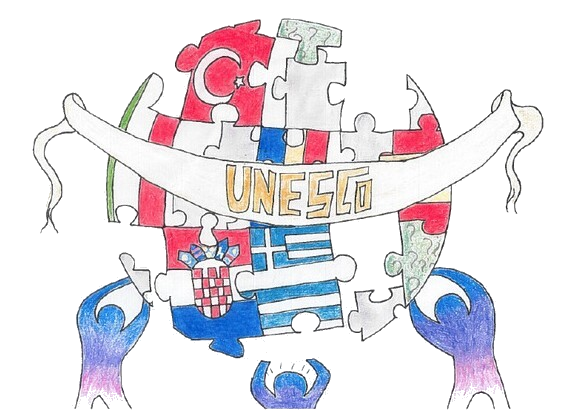Nowadays, students are required to be culturally aware, they need to learn about it and be able to act as a bridge between cultures and between tradition and modernity and serve as key agents in promoting an intercultural understanding. Adolescents tend to question the customs, traditions, beliefs and attitudes that have been transmitted to them in childhood, while seeking their place in the world and their own identity. Due to the fact that culture and education are not appreciated at their real value, European schools are increasingly having young people with many learning problems, and the lack of culture can prevent them from evolving in a constantly dynamic European market. The project addresses the need identified in the 6 schools involved to raise the students awareness of UNESCO European heritage, to make the students more sensitive to the meaning of European culture.
The main goal of this project is to give young people the opportunity to enrich knowledge about European Unesco Heritage by promoting a wider understanding of Unesco heritage as a common European good, through innovative learning, teaching methods and digital ways. The project objectives are: raising young people’s awareness of the importance of Unesco European heritage, its conservation, enhancement and transmission for 500 students by the end of the project; increasing by 20% every 2 months the number of educational activities which can lead to an increase in students’ knowledge about European culture; making 2000 students familiar with their own and other European countries’ Unesco heritage, by promoting local, national and international cultures during 2 years of the project; stimulating the school success of 300 disadvantaged students from partner schools by giving them the chance to improve their knowledge about Unesco cultural heritage participating in outdoor and open education in an intercultural way; improving English language level and the specific vocabulary related to natural and cultural heritage for 500 students directly involved in the project activities, during the project lifetime; developing ICT skills for 2000 students by using the webquests, the online game, the project website, during the project activities.
This project will involve highschool students, aged 14-19 years. They will participate in the interactive activities, like: Instagram photo competition aimed to encourage students to capture one Europe’s Unesco elements, celebrating the International days observed by UNESCO, creating the original postcard and participating in challenges, participating in lessons using webquests, playing Kahoot games regarding Unesco heritage during classes, creating flyers using QR codes in order to promote Unesco heritage, eTwinning activities. Teachers from each partner school (English, History, Tourism, Geography, ICT) who will bring all the knowledge and will have an active role in project activities.
The project timeline is divided into 6 topics: natural heritage, cultural heritage, European heritage in danger, representative list of the intangible heritage, intangible elements in need of urgent safeguarding and the tentative list. The specific activities dedicated to each of the 6 topics will be completed with workshops on sustainable tourism, criteria for selection and good safeguarding practices of the sites, and presentations of the most important initiatives that help promote awareness and provide tools for students to engage with heritage: GoUNESCO, Go Heritage Runs, #makeheritagefun.
Final products and results will be: project website, e-twinning project space, the online app available on Google play which will be addressed to teachers and pupils in secondary schools, a variety of online tools – webquests and Kahoot games created as fun and interactive activities for working in a group and for learning about Unesco European heritage and the international days observed at UNESCO;digital stories and sharing presentations in an interactive way using Microsoft Sway;leaflets with different elements of the European Unesco heritage where QR codes will be introduced.
Permanent communication (e-mails, WhatsApp, Skype, Messenger, Signal, phone), the agreement signed and assumed by all the partners, the project timeline, the communication and dissemination plan (including DEOR plan), the monitoring plan will be used to avoid some misunderstanding between partners. The project idea is to assure free access of this educational materials to a high number of students and teachers to know more, to understand better and appreciate the Unesco cultural heritage. The outcomes have a high potential of leaving a long-lasting effect and will be used for sure by all 6 partner schools many years after the project will end within school curricula. The use of open education and outdoor education in an intercultural way will determine an increase in students’ culture, will stimulate the interest for our heritage and the schools success.
